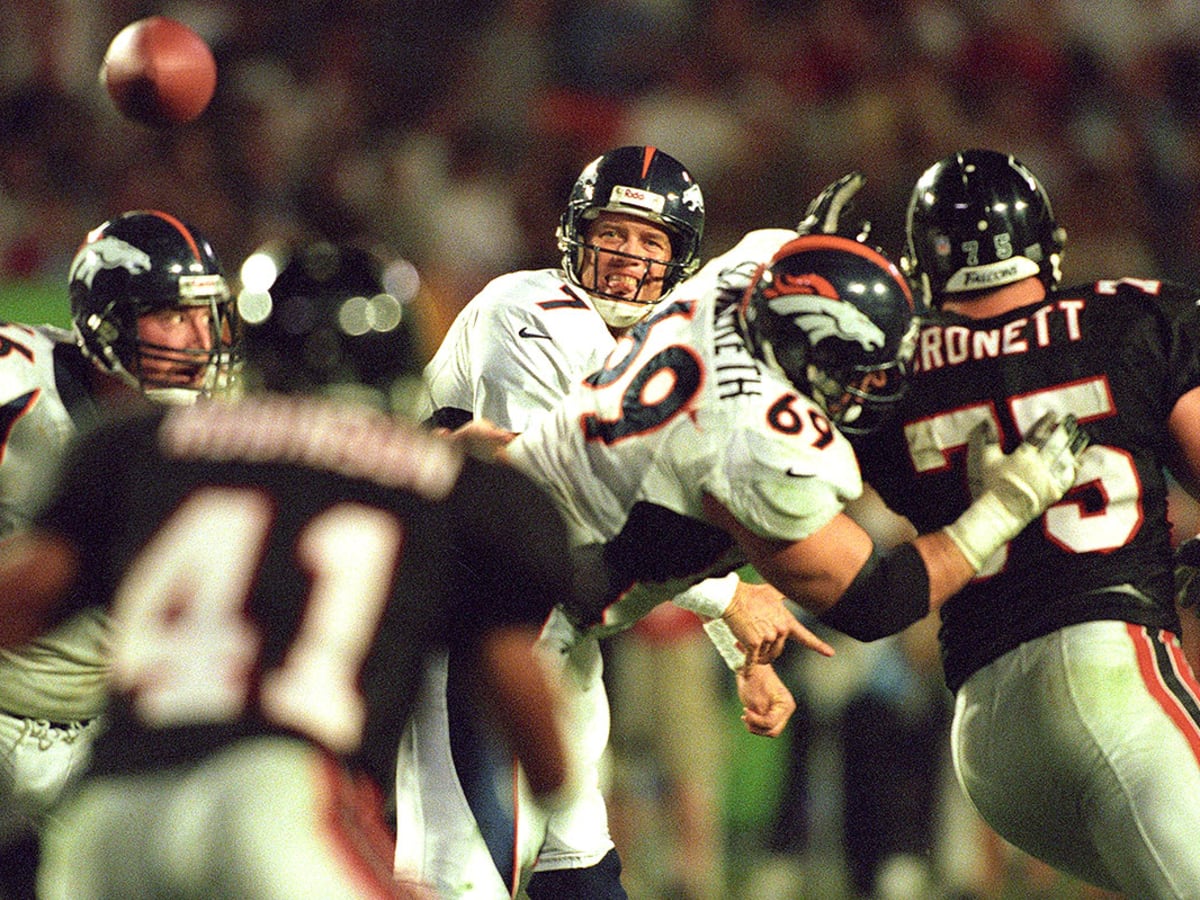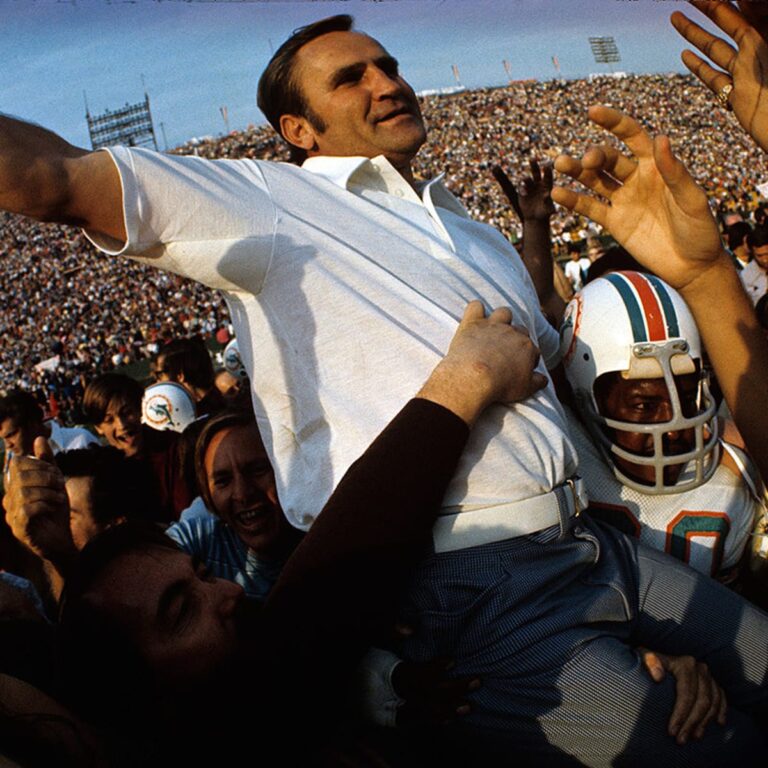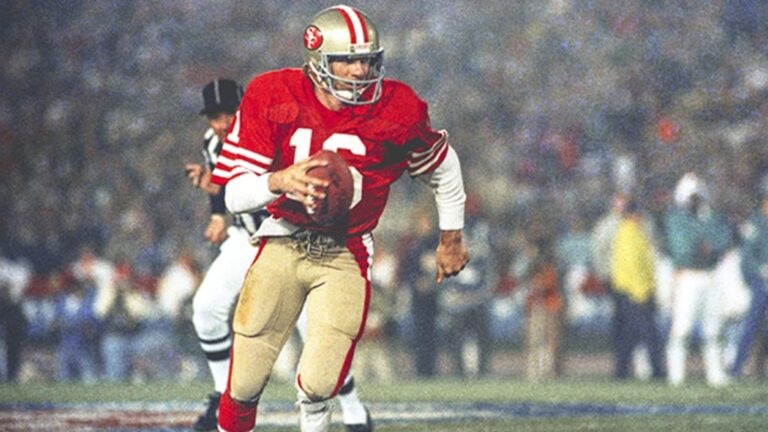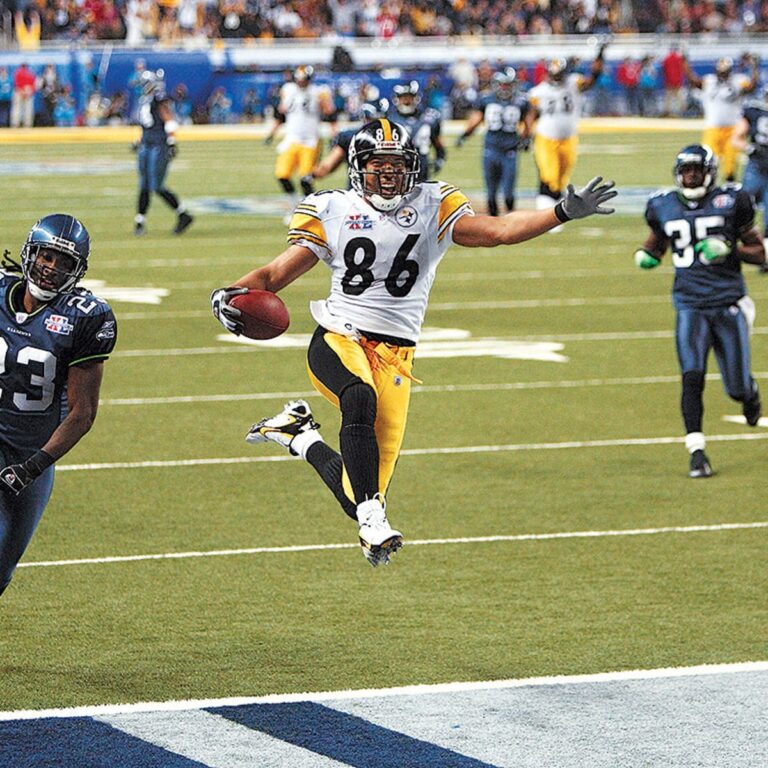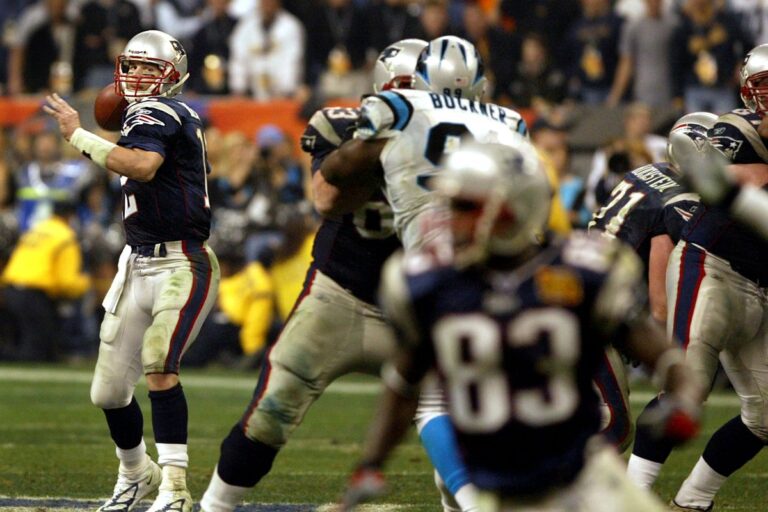Super Bowl XXXIII: Broncos vs. Falcons – Elway’s Farewell and Mile High Elation
Introduction:
Super Bowl XXXIII, held on January 31, 1999, at Pro Player Stadium in Miami, Florida, was a momentous chapter in NFL history that marked the conclusion of one of the greatest quarterback careers and the continuation of the Denver Broncos’ championship legacy. The matchup between the Broncos and the Atlanta Falcons not only unfolded as an intense battle on the gridiron but also showcased the farewell performance of quarterback John Elway and the elation of Mile High City as the Broncos secured their second consecutive Super Bowl title. In this blog post, we delve into the narrative of Super Bowl XXXIII, a game defined by milestones, emotions, and the enduring legacy of a football icon.
The Context:
Super Bowl XXXIII took place in an era when the Denver Broncos, led by head coach Mike Shanahan, were riding high on the success of their Super Bowl XXXII victory. The Atlanta Falcons, coached by Dan Reeves, were making their first Super Bowl appearance, seeking to overcome the Broncos’ championship experience. The stage was set for a clash that would be remembered for its emotional significance and the continuation of a football dynasty.
The Teams and Players:
The Broncos were led by the legendary quarterback John Elway, whose illustrious career had been defined by Super Bowl heartbreaks and triumphs. On the Falcons’ side, quarterback Chris Chandler and a formidable defense led by players like Jamal Anderson sought to secure an upset victory.
The Game Unfolds:
Super Bowl XXXIII kicked off with the Broncos taking an early lead, showcasing the offensive prowess that had defined their season. John Elway, in his farewell performance, delivered a stellar showing, throwing for 336 yards and one touchdown. The Falcons, despite putting up a valiant effort, found it challenging to contain the Broncos’ offensive onslaught.
The pivotal moment came in the second quarter when John Elway orchestrated a memorable 80-yard touchdown drive, culminating in a touchdown pass to Rod Smith. The Broncos extended their lead, and despite a late surge by the Falcons, Denver secured a 34-19 victory, marking their second consecutive Super Bowl title and providing a fitting farewell to their iconic quarterback.
John Elway’s Farewell Performance:
Super Bowl XXXIII was not just a game; it was a poignant farewell to one of the NFL’s greatest quarterbacks. John Elway, at the age of 38, displayed the same athleticism, leadership, and determination that had defined his storied career. His farewell performance showcased the quarterback’s ability to rise to the occasion on the grandest stage and solidified his status as a football icon.
The 80-yard touchdown drive orchestrated by Elway in the second quarter became a defining moment, symbolizing the quarterback’s ability to deliver in clutch situations. The emotional resonance of Elway’s farewell added an extra layer of significance to the Broncos’ championship victory.
Mile High Elation and Offensive Brilliance:
The victory in Super Bowl XXXIII unleashed a wave of elation in the Mile High City, as the Broncos celebrated their second consecutive championship. The team’s offensive brilliance, led by Elway and complemented by players like running back Terrell Davis and wide receiver Rod Smith, showcased the depth and talent of the Broncos’ roster.
Terrell Davis, who rushed for 102 yards and scored a touchdown, continued to be a key contributor to the Broncos’ success. The team’s ability to balance the passing game with a potent rushing attack added to the challenge posed to the Falcons’ defense and highlighted the versatility of the Broncos’ offense.
Key Defensive Moments:
While Super Bowl XXXIII featured offensive highlights, key defensive moments played a crucial role in shaping the outcome. The Broncos’ defense, led by players like linebacker Bill Romanowski and defensive end Neil Smith, applied pressure on Falcons quarterback Chris Chandler and created turnovers that disrupted Atlanta’s offensive rhythm.
One of the pivotal defensive plays came in the second quarter when Neil Smith forced a fumble that led to a Broncos touchdown. The ability of the Broncos’ defense to capitalize on turnovers and limit the Falcons’ scoring opportunities showcased the team’s well-rounded approach to the game.
Halftime Show and Cultural Impact:
Super Bowl XXXIII’s halftime show featured a performance by the legendary singer Gloria Estefan, continuing the tradition of showcasing top-tier musical talent during the Super Bowl spectacle. While halftime shows of this era may not have been as elaborate as contemporary productions, they contributed to the evolving cultural significance of the Super Bowl as a major entertainment event.
Legacy and Impact:
Super Bowl XXXIII left an enduring legacy, marking the end of John Elway’s illustrious career with a storybook ending. The victory solidified the Broncos’ status as a football dynasty, with back-to-back championships under the leadership of coach Mike Shanahan. John Elway’s farewell added an emotional layer to the triumph, resonating with football fans and leaving an indelible mark on the history of the game.
For the Falcons, Super Bowl XXXIII represented a valiant effort in their first championship appearance. The game showcased the team’s competitive spirit and set the stage for future successes, including a Super Bowl appearance in the following decade.
Conclusion:
As we reflect on Super Bowl XXXIII, it stands as a moment of football history defined by milestones, emotions, and the culmination of a legendary career. The game not only celebrated the Denver Broncos’ second consecutive championship but also served as a fitting farewell to John Elway, one of the NFL’s greatest quarterbacks. Super Bowl XXXIII remains a timeless chapter in football history, embodying the essence of the sport – determination, resilience, and the elation of victory.

